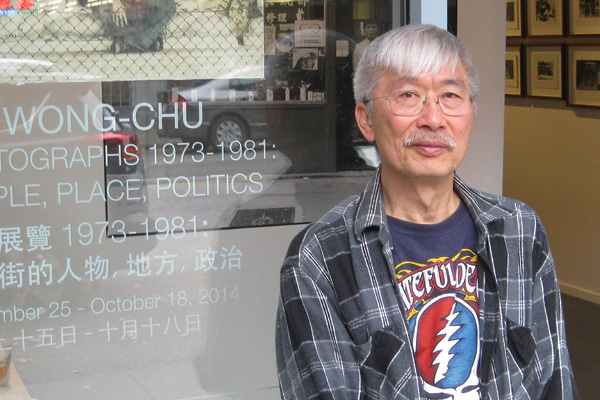by Terry Watada
editor’s note: Terry Watada is on summer break and will return in October. In the interim, we thought we’d publish some “classic” columns by Terry.
So here we are, Christmas and Oshogatsu 1998! And the sansei are generally in their thirties, forties, and (dare I say it) fifties. Again, generally, most are doing fairly well. They are dentists, doctors, lawyers, accountants, architects, engineers, graphic artists, journalists, news anchors, television personalities, writers, pharmacists, teachers, professors, contractors, plumbers, electricians, farmers, business people, and a partridge in a pear tree. In fact, they seem to occupy space in every profession, trade and business.
And the outward manifestation of all this success? Gargantuan houses in the distant suburbs. The 3000 plus square foot property seems to be the life goal. Multiple bathrooms, bedrooms and a Jacuzzi rest comfortably in these palaces of the sansei sultans. I don’t know if there’s a correlation, but I once overheard a couple in a Chinese restaurant and the man was bragging about an uncle with eighteen bathrooms in his house! Eighteen? Did the man have a bladder problem?
Anyway, the mark of success for the sansei seems to be (besides the mansion and the bathrooms) a kitchen with stainless steel appliances (the industrial look of course), microwave, island or peninsula eating area, IKEA cupboards with windows and ceramic tiles on the walls; sunken living room; furniture from the Art Shoppe (a suspect store since it insists on the archaic spelling); barbeque in the backyard; computers in the home office; swimming pool (if possible, keeping in mind practicality is not an issue); and the ubiquitous television set. How many houses have I entered where every room featured a Sony. Of course the fifty to seventy inch screen sits in the finished basement (another must-have feature) along with the bar, tennis table and a pool table for the more pretentious. Those monster t.v.s are really something. Great when you watch them dead-on, one step sideways and the picture goes grey with images elongating and transforming into alien beings. (I have been assured the new technology allows for perfect viewing from every angle — “it’s like being there!”) By the way, there are no books in the house except for the Franklin Mint Collection of the great works of English literature (bought monthly at $50 per volume) or the odd Japanese-Canadian title — for the kids.
So why the propensity for excess? Why the systematic lowering of values? Well, probably it’s a matter of keeping up with the Fukumotos; that is, the classic competitive response inherent in materialism. There is also the children to consider.
With an average of two kids, one boy, one girl, the sansei couple (in its myriad forms) needs the five bedroom house: two for the little ones, one master, one for guests and one for storage/home office. So where in the world is that couple going to find a house that size and affordable (about $250,000 plus, I would imagine) but in the suburbs. But not just the suburbs but the suburbs where sidewalks are a rarity, where bus service is once a millennium, and where the mammoth shopping centre houses all the cultural amenities that make life mediocre (movie choices usually include such stellar eye-candy treats as Armageddon, The Waterboy and Meet Joe Black).
I do agree there are schools out there — better than the city I can’t say but the buildings are newer. On the other hand, the car becomes an incredible necessity. The kids have to be transported to hockey lessons; figure skating lessons; Little League; T-Ball; swimming classes; and judo, karate, whatever classes (the club membership dominated by hakujin students bowing to the washroom because they don’t know any better). Why, some even go to Japanese Language School.
Finally, successful third generation parenthood seems to be measured in the amount of toys the children accumulate. With so many affluent relatives and the hyper-consumerism of the parents, the children are showered with gifts for whatever occasion (Christmas especially brings an orgy of toys), sometimes for just being well behaved. From Brio/Thomas the Tank Engine wooden train sets to NASCAR Barbie, anything the kid wants, the kid gets. I know of one who just looks at a toy and smiles. In an instant, an aunt, mother, father, grandparent has bought it, and the kid is happy.
The huge floor space of the house helps to spread out and display the toy treasures but isn’t it a bit ridiculous to call a friend or relative to ask what the kid wants for Christmas and the adult answers by saying they have all the latest toy products on the market?
All of this is done in the name of love of course. Sansei parenthood dictates that they cannot deny their kids anything (maybe the nisei denied them too much to warrant such a response). I suppose that’s what is known as the good life. Unfortunately, the result can be disturbing: a yonsei generation of smug, spoiled and unruly kids.
This tendency to move to the hinterland, buy the house with a goitre problem and make the dreams of avarice a reality for the children makes sense to me only in one context. With the in-law suite, the solitary nisei parent can live in close proximity of family to be well-fed (nutrition is an important issue for seniors) and looked after in the case of failing health. Accidents too can be reacted to immediately or prevented.
Oh well, I suppose I should start looking in Mississauga, Brampton, Coquitlam or Surrey for my dream home. The fifty inch Sony is on the way — should get it in time for Oshogatsu. Nothing exceeds like excess.


